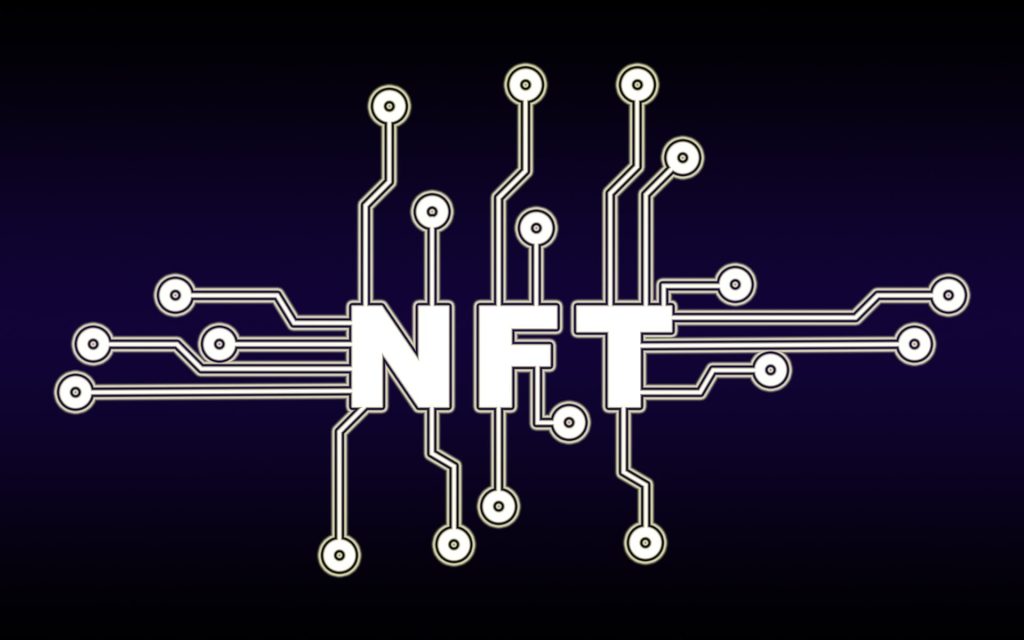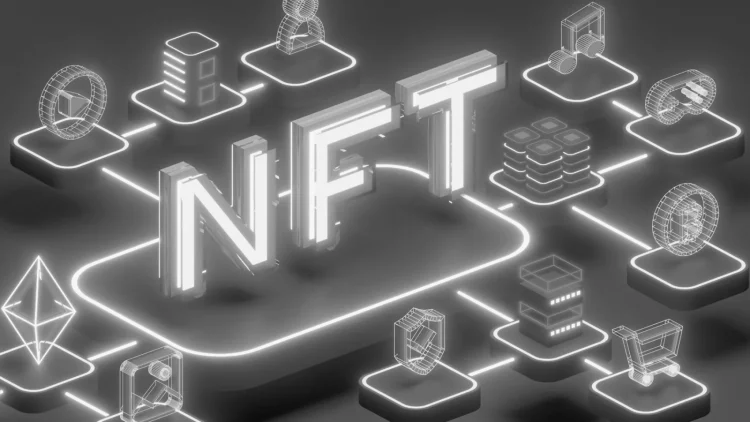Introduction
The rise of Non-Fungible Tokens (NFTs) has ushered in a new era of digital assets, revolutionizing sectors such as art, gaming, entertainment, and real estate. NFTs, unique digital representations of ownership, have become immensely popular, allowing creators and collectors to buy, sell, and trade unique items in an immutable digital marketplace. However, with the explosive growth of NFTs, concerns have emerged regarding their role in money laundering, fraud, and other illegal activities.
Global regulatory bodies have begun to focus their attention on NFTs as they attempt to ensure that this burgeoning market develops responsibly and sustainably. The anonymity and decentralized nature of blockchain technologies, while offering benefits such as transparency and security, also present challenges for regulators in ensuring compliance with anti-money laundering (AML) laws and protecting consumers from fraud.
This article explores the challenges surrounding the regulation of NFTs, the importance of ensuring their legal compliance, and the strategies regulators and market participants can implement to prevent illicit activities. By examining the potential risks, the role of regulatory bodies, and proactive measures that can be taken by NFT marketplaces and participants, this article seeks to provide insights into ensuring the healthy growth of the NFT ecosystem.
What Are NFTs?
NFTs are digital assets that represent ownership of a unique item or piece of content, recorded on a blockchain. Unlike cryptocurrencies like Bitcoin or Ethereum, NFTs are non-fungible, meaning each token is unique and cannot be exchanged on a one-to-one basis. They are often used to authenticate ownership of digital art, music, videos, virtual land, and other forms of intellectual property.
Key characteristics of NFTs include:
- Unique Identity: Each NFT is unique and cannot be replicated or replaced.
- Immutable Ownership: Ownership records of NFTs are stored on a blockchain, which ensures transparency and security.
- Interoperability: NFTs can be traded across different platforms and marketplaces, thanks to the open nature of the blockchain.
Despite these benefits, the NFT market is also highly speculative, with prices for some assets reaching astronomical levels. This volatility and lack of regulation have led to concerns over its potential use in illicit activities.
Challenges of Regulating NFTs
1. Anonymity and Pseudonymity in Blockchain Transactions
One of the major appeals of blockchain technology is its ability to offer pseudonymity. While blockchain transactions are transparent, they are also often pseudonymous, meaning that users can transact without revealing their real-world identities. This presents a challenge for regulators, as transactions on NFT marketplaces can easily be linked to illicit activities, such as money laundering, if the identities of the parties involved remain hidden.
Criminal actors can exploit this anonymity by conducting illicit transactions, including money laundering or transferring assets between multiple accounts to obfuscate the origin of the funds. For example, money launderers could purchase NFTs using illicit funds and then resell them to clean the money, making it difficult for authorities to trace the origins of the funds.
2. Lack of Centralized Authority
The decentralized nature of the blockchain means there is no single entity responsible for overseeing or governing transactions. This lack of a centralized authority complicates the enforcement of existing laws and regulatory frameworks. NFT marketplaces are often peer-to-peer, with no intermediary that can ensure the legitimacy of transactions or verify the identities of buyers and sellers.
Regulators face significant hurdles when trying to enforce AML regulations, as they cannot easily pinpoint specific entities to hold accountable. This decentralization also makes it more challenging to enforce KYC (Know Your Customer) or AML checks on individual buyers and sellers.
3. Speculative Market and Price Manipulation
The speculative nature of NFTs—coupled with the hype surrounding them—has led to inflated prices for digital assets. This volatility has made NFTs an attractive vehicle for price manipulation schemes. By artificially inflating the value of an NFT, bad actors can create a false sense of value, selling the asset at an inflated price to unsuspecting buyers, and profiting from the difference.
This phenomenon is particularly concerning as it undermines trust in the market and exposes buyers to financial risks. The lack of regulation and oversight allows for the possibility of fraudulent actors manipulating prices without the need for legal consequences.
4. Intellectual Property (IP) Concerns
NFTs are often linked to creative works, such as digital art, music, or video. However, the intellectual property associated with an NFT does not always align with the ownership rights granted by the token itself. In some cases, buyers may assume they are acquiring exclusive rights to the underlying digital asset, only to discover later that they have only purchased ownership of the token, not the rights to the original work. This can lead to legal disputes and confusion over ownership rights, which presents additional challenges for regulators.

Regulatory Frameworks and Initiatives for NFT Markets
As the NFT market continues to grow, regulatory bodies around the world are beginning to take a more active role in creating frameworks to address these challenges. Governments and financial authorities are focused on ensuring that the NFT space operates in compliance with anti-money laundering (AML) and know-your-customer (KYC) regulations, as well as protecting consumers from fraud.
1. The Role of Financial Action Task Force (FATF)
The FATF, an intergovernmental organization that sets global standards for AML and combating the financing of terrorism (CFT), has recognized the need to regulate digital assets, including NFTs. In its 2019 Guidance on Virtual Assets and Virtual Asset Service Providers (VASPs), FATF outlined recommendations for countries to regulate digital asset transactions, including NFTs, to prevent money laundering and other illicit activities.
One of the key elements of FATF’s recommendations is the travel rule, which requires digital asset service providers to share identifying information about the parties involved in a transaction. While FATF’s guidance does not mandate the regulation of NFTs specifically, its recommendations are increasingly being adapted by regulatory bodies to apply to the broader digital asset market.
2. European Union’s Digital Asset Regulation
The European Union has been proactive in addressing the regulatory challenges posed by digital assets. In 2020, the EU introduced its Markets in Crypto-assets Regulation (MiCA), a proposal aimed at regulating digital assets, including NFTs, across member states. The MiCA framework outlines clear guidelines for the issuance, trading, and custody of digital assets, focusing on investor protection, market integrity, and AML compliance.
Under MiCA, NFT issuers may be required to comply with KYC and AML procedures, particularly if the tokens are tied to financial assets or can be traded on secondary markets. This regulation aims to prevent illegal activities such as fraud, money laundering, and market manipulation.
3. United States Regulatory Efforts
In the United States, NFTs are subject to regulation under existing laws such as the Securities Act of 1933 and the Commodity Exchange Act. The Securities and Exchange Commission (SEC) has indicated that certain NFTs may be considered securities if they are sold with the expectation of profits derived from the efforts of others.
The Financial Crimes Enforcement Network (FinCEN), the primary U.S. regulator for AML compliance, has also begun issuing guidance to apply AML and KYC rules to virtual asset service providers (VASPs) operating in the NFT space. As with other digital assets, NFT marketplaces are being required to implement appropriate compliance programs to detect and prevent money laundering activities.
4. Consumer Protection and Market Integrity
Consumer protection is a growing area of concern for regulators. NFT buyers may not fully understand the risks involved in purchasing digital assets, particularly when it comes to issues like intellectual property rights, price manipulation, and fraud. To address these concerns, regulators may impose requirements on NFT platforms to disclose certain information to buyers, such as the origin of the NFT, the rights associated with it, and any potential risks related to the purchase.
In addition, NFTs with utility or financial functionality, such as those used in decentralized finance (DeFi) applications, could be subject to additional scrutiny and regulatory requirements to ensure that they are compliant with existing financial regulations.
Proactive Measures for NFT Marketplaces
NFT marketplaces play a central role in the ecosystem, serving as the primary platforms for buying, selling, and trading NFTs. To prevent illicit activities and comply with regulatory standards, marketplaces must implement a range of proactive measures to protect users and maintain market integrity.
1. Implementing KYC and AML Procedures
NFT platforms should require users to complete Know Your Customer (KYC) checks, ensuring that they verify the identities of buyers and sellers before transactions can be conducted. This helps to prevent money laundering by ensuring that transactions can be traced back to legitimate individuals. In addition, platforms should implement Anti-Money Laundering (AML) procedures to monitor for suspicious activity, such as unusually large transactions or rapid trading of the same NFT between accounts.
2. Educating Buyers and Sellers
Education is key to ensuring a healthy NFT marketplace. Platforms should provide clear information on the risks associated with NFTs, including potential for fraud, price manipulation, and intellectual property disputes. By promoting transparency and understanding, NFT platforms can help reduce the likelihood of users falling victim to scams or making uninformed purchases.
3. Collaboration with Regulatory Bodies
NFT marketplaces should engage with regulatory bodies to ensure that their platforms are in compliance with local laws and global standards. By proactively cooperating with regulators, NFT platforms can stay ahead of potential legal challenges and ensure their platforms operate in a secure and compliant manner.
4. Monitoring Transactions for Fraudulent Activity
To protect users and ensure the integrity of the marketplace, NFT platforms should implement robust monitoring systems that can identify suspicious activity, including price manipulation, fake listings, or stolen NFTs. By using artificial intelligence (AI) and machine learning algorithms, marketplaces can
quickly detect and prevent fraudulent behavior.
Conclusion
The NFT market holds immense potential to revolutionize the way digital assets are created, owned, and traded. However, the anonymity, speculative nature, and decentralization of the NFT space present significant challenges in terms of regulation and consumer protection.
To ensure the healthy development of the NFT market, regulatory bodies must continue to develop frameworks that address money laundering, fraud, and other illegal activities while promoting innovation and growth. At the same time, NFT marketplaces and participants must take proactive steps to implement robust compliance programs, educate users, and maintain transparency.
With the right regulatory measures in place and a commitment to ethical practices, the NFT market can thrive, creating opportunities for creators, investors, and consumers alike, while minimizing the risks associated with illicit activities.

















































